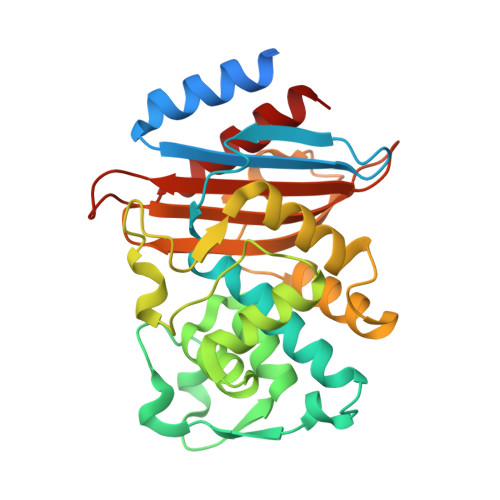Predicting allosteric mutants that increase activity of a major antibiotic resistance enzyme.
Latallo, M.J., Cortina, G.A., Faham, S., Nakamoto, R.K., Kasson, P.M.(2017) Chem Sci 8: 6484-6492
- PubMed: 28989673
- DOI: https://doi.org/10.1039/c7sc02676e
- Primary Citation of Related Structures:
5KMT, 5KMU - PubMed Abstract:
The CTX-M family of beta lactamases mediate broad-spectrum antibiotic resistance and are present in the majority of drug-resistant Gram-negative bacterial infections worldwide. Allosteric mutations that increase catalytic rates of these drug resistance enzymes have been identified in clinical isolates but are challenging to predict prospectively. We have used molecular dynamics simulations to predict allosteric mutants increasing CTX-M9 drug resistance, experimentally testing top mutants using multiple antibiotics. Purified enzymes show an increase in catalytic rate and efficiency, while mutant crystal structures show no detectable changes from wild-type CTX-M9. We hypothesize that increased drug resistance results from changes in the conformational ensemble of an acyl intermediate in hydrolysis. Machine-learning analyses on the three top mutants identify changes to the binding-pocket conformational ensemble by which these allosteric mutations transmit their effect. These findings show how molecular simulation can predict how allosteric mutations alter active-site conformational equilibria to increase catalytic rates and thus resistance against common clinically used antibiotics.
Organizational Affiliation:
Department of Molecular Physiology , University of Virginia , Box 800886 , Charlottesville , VA 22908 , USA . Email: kasson@virginia.edu.

















